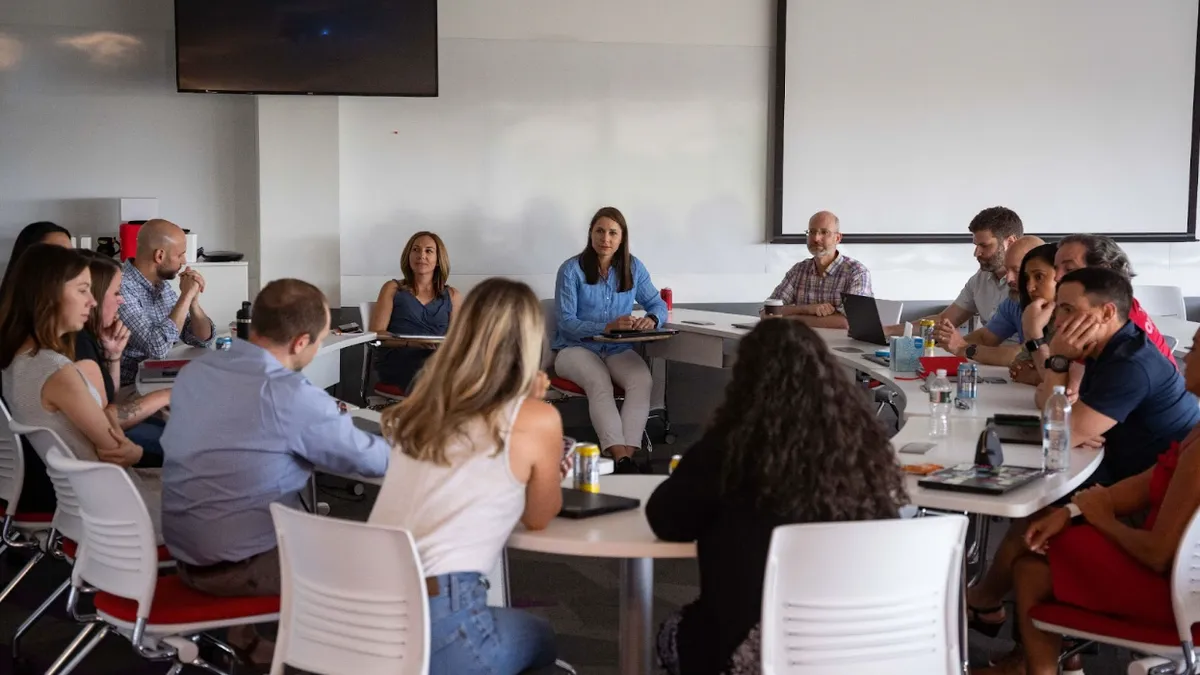It's been a whirlwind year for business leaders and HR professionals alike. Regardless of company size, industry or ambitions, everyone has had to endure uncertainty and make adjustments accordingly.
While some may be more recession-proof than others, every business strategy has to be fluid. The list of tough decisions leadership faces is long and complex. The 2022 CEO Benchmarking Report surveyed executives from a range of industries on those decisions, and what they're prioritizing during these latest tumultuous economic times.
Their answers were wide-ranging and nuanced, but a few consistent themes emerged:
- Companies recognize the need for evolving hybrid workplace models.
- Hiring and retention remain priorities, even as dynamics shift.
- People data is vital to understanding employee engagement and performance.
Despite the underlying uncertainty, it's reassuring to see that the lessons of 2020 and 2021 aren't lost, even as budget cuts, personnel decisions, and adjustments to revenue targets undermine almost everyone's plans. By and large, executive teams are still heeding the word of their people. And they need people leaders by their side to help guide them through the next phases of their fluid strategies.
Let's dive into each of those themes further.
1. Companies recognize the need for evolving hybrid workplace models.
Whereas in 2020, many HR teams were tasked with creating hybrid work guidelines on the fly, most companies now have a plan for how to keep their people—remote, on-site and everyone in between—connected. Still, those plans require thoughtful maintenance and upkeep.
The report found that 41% of execs cited "working well remotely" as an ongoing challenge, a stat that played out regardless of their company's specific hybrid model. Some stipulate employees come in a certain number of days per week; others grant full autonomy in terms of where and when people work. Everyone has had to adapt after some trial and error.
Across the board, there's a recognition that somehow, some way, you'll end up conducting some of your business virtually. Companies are conceding that remote work is here to stay—and they want to figure out how to make it work.
2. Hiring and retention remain priorities, even as dynamics shift.
A complicated labor market has been the hallmark of 2022. The economy is steadily adding jobs, but the low unemployment rate feels misleading. Inflation concerns have put a halt on many hiring plans, even forcing cuts in tech and other B2B services, and it's tough to quantify how many people who left the corporate workforce in 2020 and 2021 have returned.
All that makes hiring the right people—and developing them—critical. Accordingly, survey respondents said they're prioritizing people who fit both the short- and long-term needs of their businesses.
It's a key effect of The Great Resignation (even if it's been a long-known truth for many HR professionals): Leadership recognizes the importance of recruiting people who are not just qualified for the role, but also for the organization. Nearly half (49%) of respondents still said "attracting qualified candidates" was a top hiring concern, but 37% cited "recruiting people who will stay" as a priority. It's proof that retention and recruiting increasingly go hand in hand, and that the talent lessons of the last few years have not been lost.
3. People data is vital to understanding employee engagement and performance.
Behavioral data, one of the metrics upon which talent optimization is predicated, is no longer some wild frontier. Executives who care about their people understand which behaviors are driving their performance. They have learned who works best where, and who is stretched most by a hybrid or all-remote dynamic. In fact, 35% of survey respondents said behavioral data is now a key component in their hiring evaluations.
Respondents also indicated that behavioral information was key to reintegrating people on-site. After a prolonged stretch in the hybrid in-between, understanding how people will interact, respond and perform in person is an essential data point.
A people strategy is a systematized approach to maximizing hiring and retention efforts. That could mean flexible work hours, unlimited paid time off or an employee-choice workplace option—it all depends on your people's needs. But no matter what the specifics, one thing is clear: Companies who put their people strategy on a level with their business strategy are better equipped to withstand uncertainty.
Adjusting for economic volatility doesn't mean abandoning talent strategy. Many companies realized this in 2020, and they're staying the course now, knowing their people are their most valuable asset.










